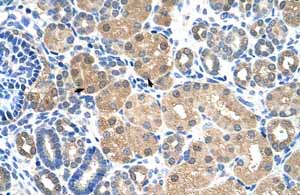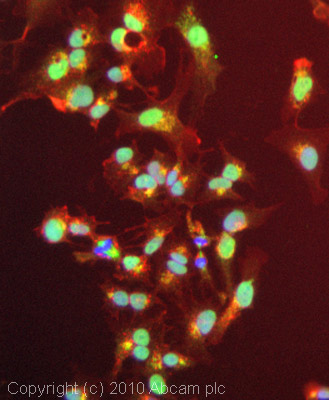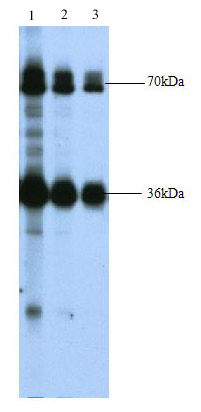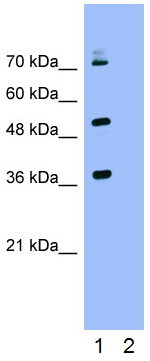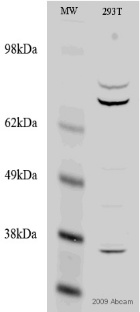Anti-Keap1 antibody
| Name | Anti-Keap1 antibody |
|---|---|
| Supplier | Abcam |
| Catalog | ab66620 |
| Prices | $395.00 |
| Sizes | 100 µl |
| Host | Rabbit |
| Clonality | Polyclonal |
| Isotype | IgG |
| Applications | ICC/IF ICC/IF WB IHC-P |
| Species Reactivities | Mouse, Rat, Human, Rabbit, Horse, Guinea Pig, Bovine, Cat, Dog, Pig, Zebrafish |
| Antigen | Synthetic peptide: ETWTFVAPMK HRRSALGITV HQGRIYVLGG YDGHTFLDSV ECYDPDTDTW , corresponding to amino acids 542-591 of Human Keap1 Run BLAST with Run BLAST with |
| Blocking Peptide | Human Keap1 peptide |
| Description | Rabbit Polyclonal |
| Gene | KEAP1 |
| Conjugate | Unconjugated |
| Supplier Page | Shop |
Product images
Product References
Ethyl gallate attenuates acute lung injury through Nrf2 signaling. - Ethyl gallate attenuates acute lung injury through Nrf2 signaling.
Mehla K, Balwani S, Agrawal A, Ghosh B. Biochimie. 2013 Dec;95(12):2404-14.
Thyroid hormone-induced cytosol-to-nuclear translocation of rat liver Nrf2 is - Thyroid hormone-induced cytosol-to-nuclear translocation of rat liver Nrf2 is
Videla LA, Cornejo P, Romanque P, Santibanez C, Castillo I, Vargas R. ScientificWorldJournal. 2012;2012:301494.
